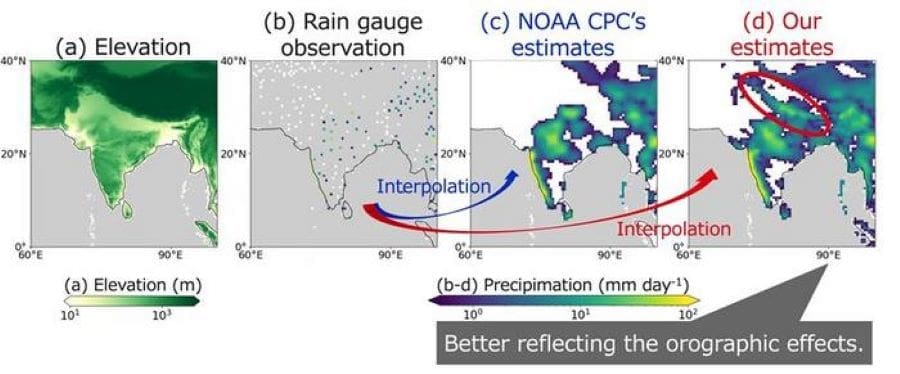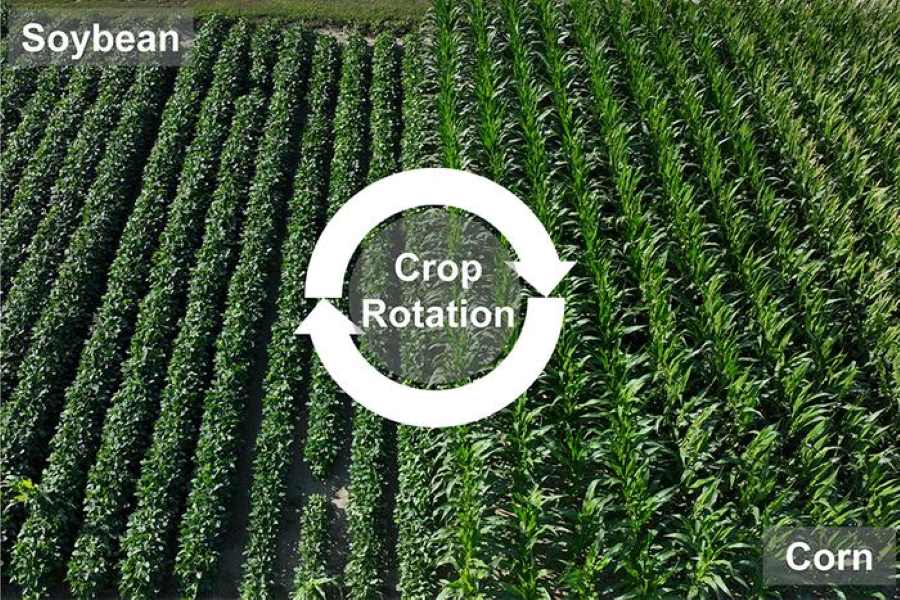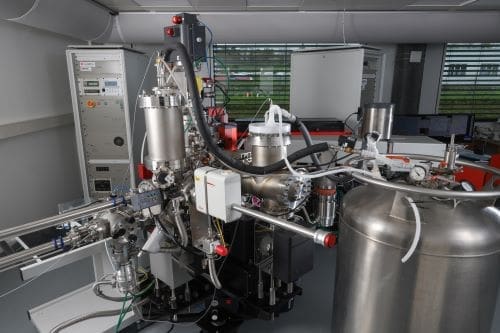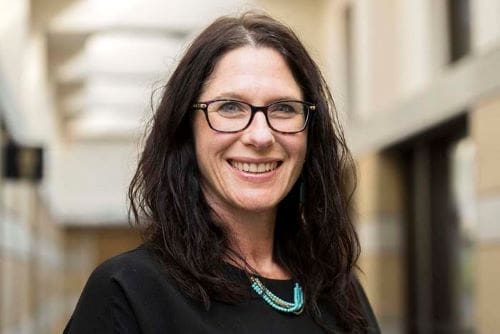Table of Contents
From drops to data: Advancing global precipitation estimates with the LETKF algorithm
With the increase in climate change, global precipitation estimates have become a necessity for predicting water-related disasters like floods and droughts, as well as for managing water resources. The most accurate data that can be used for these predictions are ground rain gauge observations, but it is often challenging due to limited locations and sparse rain gauge data.
To solve this problem, Assistant Professor Yuka Muto from the Center for Environmental Remote Sensing, Japan, and Professor Shunji Kotsuki of the Institute for Advanced Academic Research, Center for Environmental Remote Sensing, as well as the Research Institute of Disaster Medicine of Chiba University, Japan, have created a state-of-the-art method using the Local Ensemble Transform Kalman Filter (LETKF) technique.
This study was published in Hydrology and Earth System Sciences.

LETKF is a sophisticated data assimilation algorithm that makes global precipitation fields more accurate and is used in meteorology, oceanography, and environmental science. It combines real-world observations with computer model simulations to provide accurate, real-time predictions of complex systems. When combined with different inputs, like sensors, satellites, and ground stations, it can provide more precise predictions, minimizing errors.
In this study, Dr. Muto and Professor Kotsuki used the LETKF to enhance the ground data estimates through reanalysis.
“We aimed to enhance the global precipitation estimates by integrating reliable ground rain gauge observations with dynamically consistent data from reanalysis precipitation,” explains Dr. Muto when talking to us about the rationale behind this study. Adding further, she says, “We observed that the LETKF algorithm not only improves the accuracy of the precipitation estimates, but it also offers computational efficiency, making it a reliable solution for large-scale applications.”
To begin with, the team required two sets of inputs: the actual rain gauge observation data and the reanalysis data. For this, they utilized rain gauge observations acquired from the National Oceanic and Atmospheric Administration Climate Prediction Center (NOAA CPC).
They further incorporated the reanalysis precipitation data from the European Centre for Medium-Range Weather Forecasts (ERA5), which is a fifth-generation atmospheric reanalysis dataset produced by the ERA5 using satellite inputs and numerical weather prediction models. By using a 20-year climatological dataset from the ERA5 data (for 10 years before and 10 years after a given date), the LETKF algorithm constructed a “first guess” for the precipitation field and its error covariance.
Further, the rain gauge observations from NOAA CPC were integrated into these first-guess ERA5-based precipitation fields by using the LETKF. The model enabled precise interpolation, even for regions that have sparse observational coverage.
Explaining the efficiency of this method, Professor Kotsuki adds, “Our estimates showed better agreement with independent rain gauge observations and were more reliable even in mountainous or rain-gauge-sparse regions when compared to the existing NOAA CPC product.”
The model showed significant improvements in capturing the precipitation patterns in areas including the Himalayas, the Andes, and the central region of Africa. This reliability could hold a high potential in addressing natural disasters and resource allocations.
The proposed methodology is more reliable than conventional techniques due to its ability to construct a physically consistent first-guess estimate by using reanalysis data. In this, the model preserves the critical variations in precipitation patterns while reducing the smoothing effects that are often observed in existing models. This dynamic consistency is especially beneficial for complex terrains, like mountains, where conventional methods struggle.
Reflecting on the long-term implications of the study, Dr. Muto adds, “We believe that accurate precipitation estimates can transform how we prepare for and respond to disasters. By reducing uncertainty, we can mitigate economic losses, support sustainable water management, and prevent the stagnation of economic activities caused by extreme weather events.”
In summary, this study holds the potential to drive international collaborations and also innovations in climate science to ensure that global water resources are managed well to meet the challenges of the changing climate.
Journal Reference:
Muto, Y. and Kotsuki, S., ‘Estimating global precipitation fields by interpolating rain gauge observations using the local ensemble transform Kalman filter and reanalysis precipitation’, Hydrology and Earth System Sciences 28, 5401–5417 (2024). DOI: 10.5194/hess-28-5401-2024
Article Source:
Press Release/Material by Yuka Muto | Chiba University
New study shows that corn-soybean crop rotation benefits are extremely sensitive to climate
A study by researchers at the University of Minnesota Twin Cities offers new insights into how alternating corn and soybean crops can help increase crop yield in a changing climate.
The research is published in the peer-reviewed scientific journal Global Change Biology.
Rising temperatures and weather extremes are threatening global food security, making it crucial to understand how sustainable practices like crop rotation can help improve agricultural yields and resilience.
The study found that the benefits to corn-soybean rotation, compared to continuous corn year after year, are extremely sensitive to climate. For example, corn benefits from a rotation of soybeans in colder areas, while soybean benefits from a rotation of corn in warmer regions. In addition, warming during the non-growing season reduces the corn benefits, while warming in the growing season helps boost the soybean benefits.
“Corn and soybeans may experience different crop rotation benefit changes in the future, which can help U.S. farmers make more informed decisions when facing climate warming,” said Junxiong Zhou, Ph.D. candidate in University of Minnesota’s Department of Bioproducts and Biosystems Engineering (BBE) and first author on the paper.

Despite climate challenges, the study suggests increasing crop rotation can still improve overall yields and highlights its potential as a climate adaptation strategy.
While most prior studies have focused on the current climate conditions, this new study takes into account a changing climate in the future and how crop rotation is impacted by it. To address this, the researchers used satellite data combined with what they call a “causal forest model,” a scientific method that helps to understand cause-and-effect relationships in data. They estimated the benefits of crop rotation under varying climate conditions in the Midwest region of the United States.
“Millions of satellite observations and advanced machine learning models enable us to quantify the climate impacts on crop rotation benefits at the subfield level over the Midwest,” said Zhenong Jin, an associate professor in BBE and senior author on the paper.
To analyze this enormous amount of data, the researchers used an advanced machine learning tool that teaches computers to learn from examples and improve at tasks without being explicitly programmed. This helped the team understand how crop rotation benefits corn and soybean yields in the U.S. Midwest.
“This study demonstrates the great potential of interpretable machine learning for estimating large-scale effects of agricultural management practices,” said David Mulla, a professor and Larson Endowed Chair in soil and water resources at the U of M’s College of Food, Agricultural and Natural Resource Sciences, and a senior researcher at the AI Institute for Climate-Land Interactions, Mitigation, Adaptation, Tradeoffs and Economy (AI-CLIMATE).
In the future, the researchers hope to expand their analysis to include long-term diverse crop rotation systems and their interactions with all season climates. Future studies will work to focus on field-level studies to understand nutrient cycling and pest dynamics under varying climate scenarios, alongside exploring advancements like pest-resistant crops.
In addition to Jin and Zhou, the research team included Peng Zhu from The University of Hong Kong along with Dan M. Kluger and David B. Lobell from Stanford University.
This research is supported by the National Science Foundation (NSF) Smart and Connected Community project and the U.S. Department of Agriculture’s (USDA) National Institute of Food and Agriculture AI-CLIMATE project.
A commentary piece on the research can also be found on the Wiley Online Library website.
Journal Reference:
Junxiong Zhou, Peng Zhu, Dan M. Kluger, David B. Lobell, Zhenong Jin, ‘Changes in the Yield Effect of the Preceding Crop in the US Corn Belt Under a Warming Climate’, Global Change Biology 30, (11): e17556 (2024). DOI: 10.1111/gcb.17556
Article Source:
Press Release/Material by University of Minnesota Twin Cities
How cryogenic microscopy could help strengthen food security
According to the United Nations, soil salinization affects between 20% and 40% of arable land globally, with human activity and climate change – especially rising sea levels – largely responsible for this process. While the human body needs sodium to function, this is not the case for most plants. In fact, excess salt around plants’ roots gradually blocks their access to water, stunting their growth, poisoning them and hastening their death. Ten million hectares of farmland are destroyed by soil salinization every year, posing a threat to global food security.
Scientists at EPFL and the University of Lausanne (UNIL) and their Spanish partners observed how ‘Salt Overly Sensitive 1’ (SOS1), a gene identified in 1996, protects the plant cells from salt. The team of biologists and engineers produced unprecedented images using the CryoNanoSIMS (Cryo Nanoscale Secondary Ion Mass Spectrometry) ion microprobe. With this cryogenic microscopy instrument – the only one of its kind in the world – they were able to obtain precise images of the location in which a specific nutrient is stored or used within a cell or tissue sample.
Their observations show that, under high levels of salt stress, the ion transporter SOS1 no longer removes sodium but rather helps to load it into structures called the vacuoles within the cells. Better understanding this mechanism and working out why some species are more tolerant to sodium than others could, according to the scientists, allow us to develop new strategies to strengthen food security.
Their findings have just been published in Nature.

First visual proof
“Our research provides the first visual proof, at the cellular scale, of how plants protect themselves against excess of sodium,” says Priya Ramakrishna, a postdoctoral researcher at EPFL’s Laboratory for Biological Geochemistry (LGB) and the lead author of the paper. “Previous hypotheses of this mechanism were based on indirect evidence. We can now see where sodium is transported to at different levels of salt stress – something we were unable to do at this resolution before.”
The joint EPFL and UNIL team carried out observations in unprecedented detail with the recently developed CryoNanoSIMS instrument, that permits obtaining chemical images of biological tissue at a resolution of 100 nanometers, in this case on samples of plant roots that had been snap-frozen in a bath of liquid nitrogen and maintained at very low temperatures under vacuum, to preserve all elements in place in the tissue.
This approach allowed them to map individual plant cells and see where key elements, such as potassium, magnesium, calcium and sodium were stored in plant root tips – the part of the plant known as the “root apical meristem” – that contain the stem cells responsible for the development of the plant root system. The CryoNanoSIMS imaging showed the condition of the root at two different salt stress conditions.
A change of strategy
Under mild salt stress, the cells manage to keep sodium from entering. But the team observed a change of strategy under high salt stress: instead of evacuating the sodium, as previously thought, the SOS1 transporter helps to sequester it into vacuoles that serve to store unwanted products.
“But this defense mechanism is energy-intensive, slowing down the plant’s growth, inhibiting its performance and ultimately leading to its death if the salt stress persists,” explains Ramakrishna. The researchers validated their observations by performing the same experiments on mutant samples lacking the SOS1 transporter gene, revealing its inability to transport sodium into the vacuoles, which explains its strongly increased sensitivity to salt. They also ran the tests using root samples taken from rice – the world’s most common crop – and found that, in this case too, the sodium was transported to the vacuole under high salt stress.

Matching location with function
For Ramakrishna, a plant biologist by training, the chemical imaging made possible by the CryoNanoSIMS instrument is a complete game changer. And the instrument could also be used to investigate how plants protect themselves against other threats, such as heavy metal pollution and microbes.
“With this kind of truly interdisciplinary collaboration, i.e., blending biology and engineering, we can match location with function and understand mechanisms and processes that have never been observed before,” says corresponding author Anders Meibom, a professor at EPFL’s School of Architecture, Civil and Environmental Engineering (ENAC) and UNIL’s Faculty of Geosciences and Environment, in whose laboratory the CryoNanoSIMS instrument was developed.
Niko Geldner, the paper’s co-corresponding author, head of the research team at UNIL’s Faculty of Biology and Medicine and leader of the UNIL team, is equally enthusiastic about this collaboration: “Plants are fundamentally dependent on extracting mineral nutrients from the soil, but we were never able to observe their transport and accumulation at sufficient resolution. The CryoNanoSIMS technology finally achieves this and promises to transform our understanding of plant nutrition, beyond the problem of salt.”
Professor Christel Genoud, co-author of the paper and Director of the Dubochet Center for Imaging adds: “This technique is opening up an entirely new horizon in the imaging of biological tissue and places our institutions as leaders on this frontier.”
Journal Reference:
Priya Ramakrishna, Francisco M. Gámez-Arjona, Etienne Bellani, Cristina Martin-Olmos, Stephane Escrig, Damien De Bellis, Anna De Luca, José M Pardo, Francisco J. Quintero, Christel Genoud, Clara Sanchez Rodriguez, Niko Geldner and Anders Meibom, ‘Elemental cryo-imaging reveals SOS1-dependent vacuolar sodium accumulation’, Nature (2025). DOI : 10.1038/s41586-024-08403-y
Article Source:
Press Release/Material by Sandrine Perroud | École Polytechnique Fédérale de Lausanne (EPFL)
Protective actions need regulatory support to fully defend homeowners and coastal communities
As climate change drives increasingly severe hurricanes, U.S. coastal communities are bearing the brunt of mounting losses. With regulations failing to curb the damage, homeowners have become the front line of defense — but their efforts often fall short, a recent study reveals.
Led by Tracy Kijewski-Correa, professor of engineering and global affairs at the Keough School of Global Affairs at the University of Notre Dame, the study, published in the International Journal of Disaster Risk Reduction, explored how homeowners respond in the aftermath of hurricanes when reconstruction becomes necessary. Focusing on Calcasieu Parish, Louisiana — a community still recovering from a sequence of disasters beginning with Hurricane Laura — the research introduced a new methodology to document homeowner actions, the damage they experienced and their recovery paths.

Why homeowners are key to reducing losses
“With no mandates to upgrade at-risk homes, homeowners will be responsible for adapting their properties to halt mounting climate-driven losses in the housing sector,” said Kijewski-Correa, who also serves as the director of the Pulte Institute for Global Development at the Keough School. “Unfortunately, we have no idea what decisions households are making and why — this study created a methodology to answer those questions so we can better incentivize them to adapt before the next storm.”
Since 1980, U.S. losses from tropical cyclones have reached $1.3 trillion, exposing how underprepared the country remains in addressing weather and climate disasters. This growing vulnerability is compounded by rapid population growth in coastal areas and outdated or inconsistent building codes.
Gaps in protection and future risks
Using indices developed for the study, researchers measured protection levels for a number of critical home components at key points: at the time of purchase, pre-disaster and after post-disaster repairs, as well as future intended upgrades.
The study found that, on average, homeowners took proactive steps to protect their properties before the hurricane, enhanced those protections after the storm and expressed intentions to continue investing in resilience. Roofs, windows and other external components were the primary focus of these improvements. However, the typical home achieved only about half the measures needed to withstand future storms effectively.
Visible damage in neighborhoods and the experiences of family and friends also influenced voluntary homeowner decisions to invest in protective measures. Motivated by observing widespread destruction across the community, even homeowners who escaped damage in Hurricane Laura expressed intentions to invest in resilience.
Policy and incentives: closing the protection gap
“Homeowners are making efforts to ‘build back better’ — strengthening roofs, adding hurricane clips or straps and replacing standard windows with impact-rated alternatives,” said Kijewski-Correa. “Unfortunately, most investments still leave homes only moderately protected against future hurricanes.”
The study’s methodology, which includes a flexible survey tool and evaluation methods to analyze homeowner decisions, provides a framework for future research. Next steps include identifying the factors that most effectively motivate homeowners to adopt comprehensive protections.
“Policies need to incentivize comprehensive, whole-house upgrades while ensuring clear messaging about the importance of these measures,” Kijewski-Correa said. “We also need to address barriers such as affordability and awareness, which often prevent households from taking action.”
Study co-authors include civil engineering Ph.D. student Rachel Hamburger and Debra Javeline, professor of political science, both from the University of Notre Dame. The research is funded through a National Science Foundation grant under the Strengthening American Infrastructure program.
Journal Reference:
Rachel Hamburger, Tracy Kijewski-Correa, Debra Javeline, ‘Before and after disaster: Homeowner protective actions in a changing climate’, International Journal of Disaster Risk Reduction 115, 105006 (2024). DOI: 10.1016/j.ijdrr.2024.105006
Article Source:
Press Release/Material by April Toler | University of Notre Dame
Featured image credit: Gerd Altmann | Pixabay




